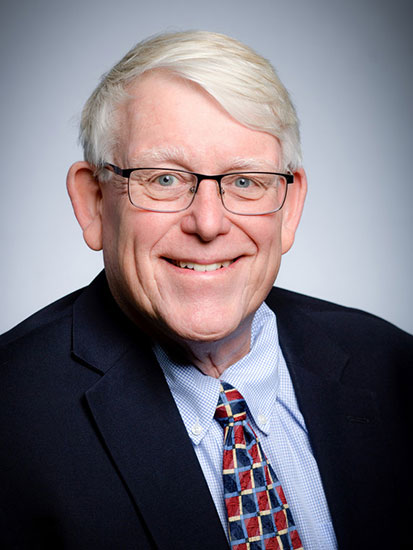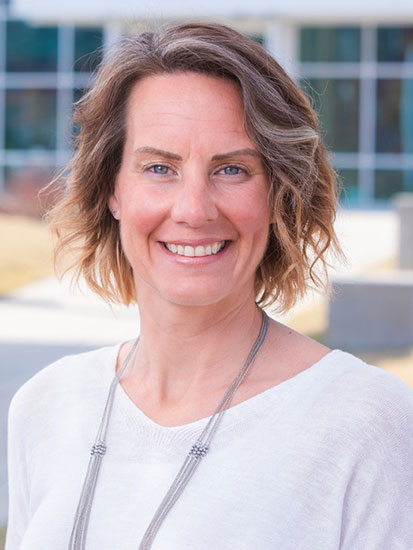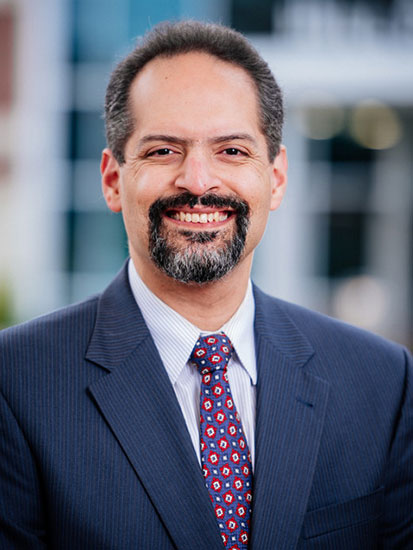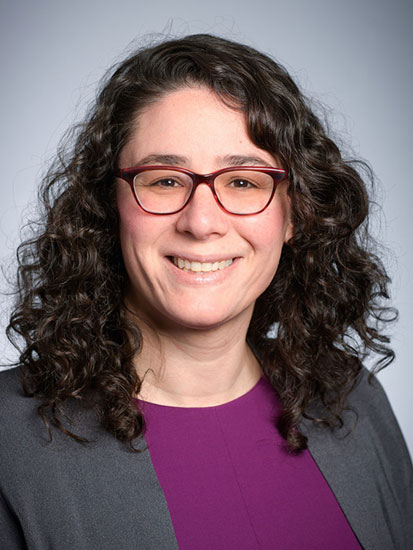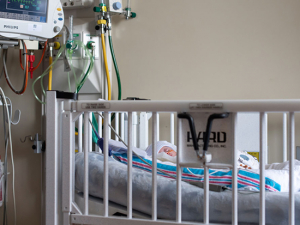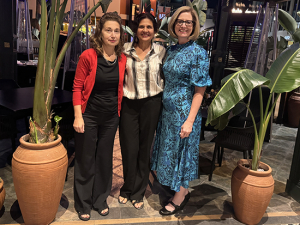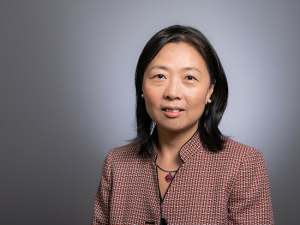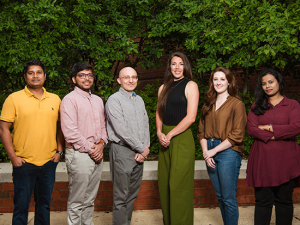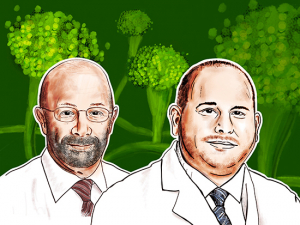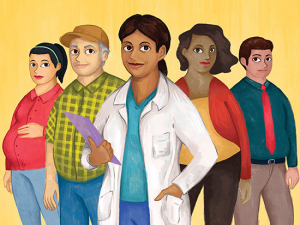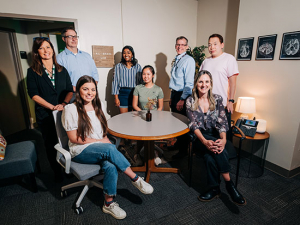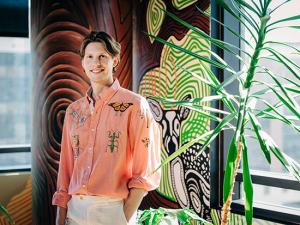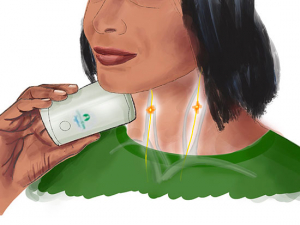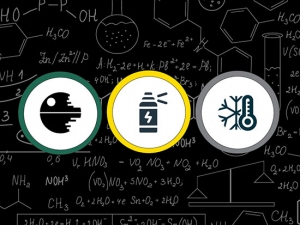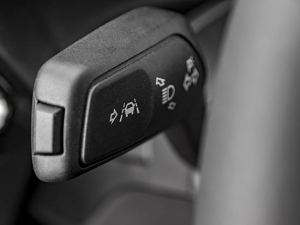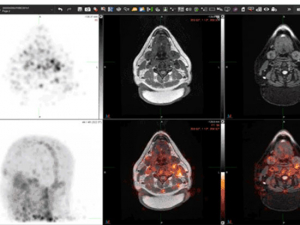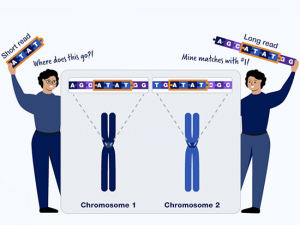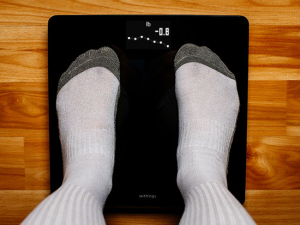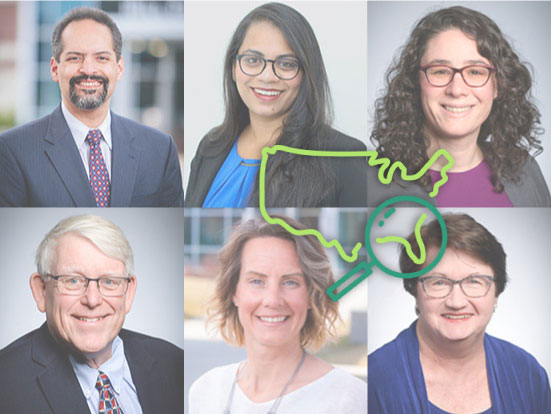 More than 100 different UAB researchers have been first authors on papers based on data from the REGARDS study, a long-running project to uncover the cause of stroke disparities in the United States. The secret to this success is a willingness to share that is built into the study's DNA, scientists say.Science always begins with a question, and Big Science poses big questions. At the turn of the millennium, one of the biggest conundrums in the health of America was the disparity in stroke deaths between Black and white individuals across the United States, and between residents of the South and people living in the rest of the country. Black people under age 75 were more than twice as likely to die from stroke than were white people, while people who lived in the South had a 40 percent higher risk of dying from stroke than their counterparts in other parts of the United States.
More than 100 different UAB researchers have been first authors on papers based on data from the REGARDS study, a long-running project to uncover the cause of stroke disparities in the United States. The secret to this success is a willingness to share that is built into the study's DNA, scientists say.Science always begins with a question, and Big Science poses big questions. At the turn of the millennium, one of the biggest conundrums in the health of America was the disparity in stroke deaths between Black and white individuals across the United States, and between residents of the South and people living in the rest of the country. Black people under age 75 were more than twice as likely to die from stroke than were white people, while people who lived in the South had a 40 percent higher risk of dying from stroke than their counterparts in other parts of the United States.
Why? To answer that question, biostatisticians and epidemiologists at the UAB School of Public Health proposed a new kind of study to the National Institute for Neurological Disorders and Stroke (NINDS): REasons for Geographic And Racial Disparities in Stroke (REGARDS). Launched in 2001, the REGARDS study was powered by in-home visits to enroll 30,239 participants in 1,866 U.S. counties by traveling health professionals (mainly nurses). The study quickly attracted attention in the field for its size and the unusual (then and now) diversity of its cohort. More than 41 percent of the participants were Black, 55 percent were women, and another 55 percent were residents of the Stroke Belt.
But it was not just the numbers that got people talking. “Every study has a personality,” said George Howard, DrPH, Distinguished Professor of Biostatistics at UAB and the inaugural co-principal investigator (PI) of REGARDS along with his wife, Virginia Howard, Ph.D., Distinguished Professor of Epidemiology. “This is and always has been a team effort, and we have always been a friendly and welcoming team.”
“We like to think we are very friendly and helpful and go out of our way to encourage and support a lot of early-career scientists and researchers in many fields,” Virginia Howard said.
Big science — and getting bigger
Twenty years later, and still running, REGARDS is still turning heads, too. “The longer we follow the cohort, the more valuable it becomes because we have more [medical] history on the participants,” George Howard noted. “We do big science, and this is only getting bigger.” (One measure of size is funding: Over its lifetime, REGARDS has received just under $100 million. Another big number: The REGARDS biobank at the University of Vermont contains 800,000 vials of blood stored in 15 large freezers.)
“When we are out at other universities or conferences speaking about REGARDS, we are often told by other scientists from around the world how unique it is to have cohort studies available from the UAB School of Public Health that those outside of UAB can use,” said Suzanne Judd, Ph.D., multiple PI for REGARDS, professor in the Department of Biostatistics and director of the Lister Hill Center for Health Policy at UAB. “I believe it’s a phenomenal resource to those both within our school and beyond.”
100-plus unique UAB first authors
This summer, George Howard was reviewing his database of REGARDS publications and noticed that more than 100 different UAB researchers have been first authors on papers based on REGARDS data. They represent the School of Public Health, of course, but also the Heersink School of Medicine, the College of Arts and Sciences, the School of Health Professions, and the School of Nursing. “I thought that was noteworthy,” Howard said. So he put together a report on this, yet another measure of the REGARDS study’s impact. (Among the fascinating stats in Howard’s report: The highest frequency of REGARDS publications so far came in 2016, and the most common journal was Stroke, followed by the Journal of the American Heart Association, the American Journal of Kidney Disease and PLoS One, demonstrating the range of REGARDS topics.) The study has now published 678 papers, with more than 80 percent of these being first-authored by investigators who were not part of the immediate study team.
"Helps jumpstart careers"
Becoming a first author on a paper is an important part of a scientist’s progress. It is extremely difficult to establish an independent lab and grant funding without reaching that milestone, Judd said: “Publishing is an important metric in science, but publication-worthy work often requires funding. It’s a catch 22. REGARDS provides that opportunity to publish with an established data source. This helps jumpstart careers. It allows a junior person to answer a research question with already built resources. We have statisticians and epidemiologists to provide assistance, too. It is great to watch junior investigators leverage the data in ways we haven’t yet considered.”
REGARDS allows researchers to ask questions not just related to stroke, but around heart attack, kidney disease, COVID-19 and so much more, Judd says. (The first COVID-related REGARDS paper is in the publication process now, Judd says, and several others will be coming soon.) “The REGARDS data and the mindset of the REGARDS team allow junior scientists to work with senior scientists who are familiar with the data to develop papers earlier in their careers,” Judd said. “It helps UAB to develop junior scientists who go on to write their own grants. The NIH and other grant-issuing agencies can see how productivity starts early here at UAB.”
Judd’s first REGARDS first-author publication came in 2011: Heavy drinking is associated with poor blood pressure control in the REasons for Geographic and Racial Differences in Stroke (REGARDS) study, only a few years after she joined UAB as a postdoctoral researcher working with the Howards. “I was developing my own research plan and transitioning out of my Ph.D. work [in nutritional epidemiology] to a faculty position,” Judd said. “Like many others, I was able to leverage REGARDS data to explore research questions and establish my own research program.”
REGARDS and recruitment
Orlando Gutierrez, M.D., professor and Marie S. Ingalls Endowed Chair in Nephrology Leadership in the Division of Nephrology, was at the University of Miami in 2010 and was being recruited by several institutions, including UAB. “One of the attractions of coming to UAB was the opportunity to work in the REGARDS study in a more involved fashion and particularly to get involved in kidney disease epidemiology in REGARDS,” Gutierrez said. “That gave me the opportunity to do many different studies and a number of grants, including my first R01 and several subsequent REGARDS-related grants.” That R01 grant “was proposing a study looking at vitamin D and other factors in relation to stroke risk,” Gutierrez said. “REGARDS has a very unique dataset, including the large number of stroke cases and the stored blood to measure the factors we were interested in. No other cohort would have enabled us to do this analysis.”
Gutierrez got his R01 grant on first submission, “and it would not have been possible without having access to REGARDS and the support of the study overall in terms of the co-investigators, epidemiologists and statisticians,” he said. “That was a really pivotal time for me coming off my K grant and moving to the R grant.” Eleven years on, Gutierrez is still heavily involved with REGARDS as leader of the study’s Kidney Working Group. “I have the capacity to shape the work going on with kidney epidemiology,” he said, as well as the chance to help a new generation of trainees get involved with the study.
“REGARDS is part of what brought me to UAB,” said Emily Levitan, Sc.D., professor in the Department of Epidemiology. “I had heard about it at a conference and met with some of the investigators. The fact that they were so open and welcoming, and that REGARDS had such a diverse population, was very appealing. The projects that I worked on before were much more demographically limited.” Levitan’s research program in heart failure and heart attack soon blossomed, and she is now co-lead of the REGARDS Heart Failure Working Group. “I had a career development award when I first came to UAB, using REGARDS data, and that launched my career here, looking at heart disease in the REGARDS participants,” Levitan said. “Several of my Ph.D. students who have graduated were able to work with REGARDS on their dissertations, and it helped launch their careers as well. The REGARDS study is well recognized in epidemiology and neurology and cardiology. That helps to represent UAB well.”
“The lack of diversity in the scientific workforce is an ongoing source of concern for all of us,” Virginia Howard said. “As a study focused on health disparities by race and geography, REGARDS has provided numerous opportunities to broaden and sustain the pool of health disparities researchers across all career levels, but especially those in racial and ethnic groups that are currently underrepresented in medical and biomedical science careers.”
"Something I cherish"
Gargya Malla, M.D., Ph.D., had already worked for several years as a physician when she came to UAB in 2016 to pursue a doctorate in epidemiology, driven by a desire to “prevent disease with more rigor” through health disparities research, she said.
Her first REGARDS paper, Does the Association of Diabetes With Stroke Risk Differ by Age, Race, and Sex? Results From the REasons for Geographic and Racial Differences in Stroke (REGARDS) Study, published in 2019, was “my first first-author paper ever, and it set the stage for me to do other things,” Malla said. This fall, she received the highly selective Judy and Peter Blum Kovler Foundation Intramural Fellowship award from the National Institute on Minority Health and Health Disparities and will spend at least a year in Bethesda, Maryland, coordinating efforts on the NIH-wide Community Engagement Alliance Against COVID-19 Disparities (CEAL) program. “It took more than two years for me to get that paper completed and published, but it is something I cherish,” Malla said. “I learned how to write scientifically, how to work with population data and how to interact with co-authors at various levels in an academic hierarchy. It was a step up in my career and marked a new feeling for me as an investigator.”
Keeping it by giving it away
The founding ethos of REGARDS was, and remains, a remarkable willingness to give outside investigators access to its data. “We decided early on that the only way to keep the study is to give it away,” George Howard said. “We have a committee that reviews proposals, and it is rare that we say no — only if it would place a burden on the participants or it has been done before.”
“People have come to us from all over the country,” Judd said. “They submit a proposal either for funding or to write a paper. Some investigators come in from other universities and already have their own mentorship teams, while others need a lot of mentorship from the REGARDS team." In fact, Judd says, REGARDS has been so successful at mentoring investigators that she is adding this as a formal goal in the application for a new round of funding from the NINDS.
Malla’s first REGARDS paper, while related to her dissertation work, was based on a question that had been submitted to the REGARDS investigators years before. “The REGARDS investigator team is very strong,” Malla said. “They nurture collaborations, and they want you to succeed.”
It is common for scientists to jealously guard their research ideas, which have both intellectual value and financial value as opportunities for grant funding. “In some studies you get sharp elbows, and we really don’t have that at all,” Levitan said. “I meet with my co-lead in the Heart Failure Working Group every other week and brainstorm ideas for new questions to answer. We come up with way more than we can do ourselves, and when we have students and trainees come along, we say, ‘Ooh, what about this one!’ The whole study has that ethos.”
“I have been a part of many different studies, and REGARDS is really unique in the way we work with people,” Judd said. “We don’t shy away if two people have the same or a very similar research question. We make an introduction and offer to facilitate the first meeting if we think that would be helpful, especially if early-career investigators are involved. We want to get as many people involved as possible and head off any potential sticky situations so collaborations can blossom.”
Participants are the real heroes
The participants, most in their 60s and older, report that they enjoy the variety of questions that come their way from researchers. “It really shows the participants the amazing things that can be done with the time they have been giving us,” Judd said.
“Those are the real heroes, the people who are willing to answer the phone and give blood to help us answer all of these questions,” George Howard said.
How to start your own REGARDS:
Mentorship advice from the scientists behind UAB’s largest study
 George and Virginia Howard have mentored dozens of young scientists over the course of their careers. So what do they tell people who want to build something as big as they have?
George and Virginia Howard have mentored dozens of young scientists over the course of their careers. So what do they tell people who want to build something as big as they have?
1. Think big. But start where you are.
“Grants in the $10 million-plus bucket, you’re not going to get those as a junior investigator,” said George Howard, DrPH, Distinguished Professor of Biostatistics at UAB and the inaugural co-principal investigator of REGARDS, which has received just under $100 million in funding so far. “But you can find someone who is successful and try to partner with them and build a symbiotic research plan.”
“Find a good mentor and get your hands in the science, even if that starts out as humble as stuffing envelopes,” said Virginia Howard, Ph.D., Distinguished Professor of Epidemiology at UAB and the other inaugural co-principal investigator for REGARDS. “We’ve hired undergraduates for the Survey Research Unit [a service of the School of Public Health that counts REGARDS as one of its largest customers], and later they went on to graduate school. Getting real-world experience is crucial.”
2. Find a model.
“Look at the track records of people who have done the same thing you want to do,” George Howard said. “But also look at whether they have partnered with young people and helped them. The person who helped me was Dr. Bradley Wells, who was a senior biostatistician at Bowman Gray School of Medicine, in Winston-Salem, North Carolina, who spent his career teaching and leading large research projects on the national and international scene. Without him, I wouldn’t have gotten to where I am.”
3. Don’t do what everyone else is doing.
“What gets funded is innovation,” Virginia Howard said. “What we did with in-home visits was new, when everyone else was bringing them into a clinic. If there is nothing out there that fits with what you want to do, think about how it could be done better. Sometimes young researchers contact us, and for the questions they want to answer, REGARDS is not the perfect study. We tell them, ‘Why don’t you make a new REGARDS?’”
4. Give and you will get.
“People sometimes don’t like to share, but there is so much positivity in collaboration,” Virginia Howard said. “You get so much more out of it.”
